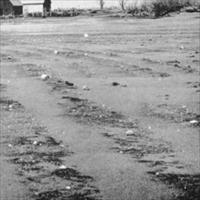KENYA: Water crisis as dry conditions persist in the north

"The situation is very bad in Mandera; people are
moving across the border to Ethiopia,"
Mandera East member of parliament Mohamed Hussein Ali told IRIN.
"Residents from the district have yet to recover
from a severe drought two years ago; [now] we fear the few animals that were
salvaged will be wiped out," he added.
The rainy season had been expected to start in
mid-March, the MP said, but because the rains failed, water pans, boreholes and
wells had dried up.
"The country is focused on people who have been
displaced by post-election conflicts," Ali said. "We have been
forgotten."
Mukhtar Hussein Liban of the Mandera Education
Development Programme told IRIN the drought had heightened tensions over
resources between different communities in the region. It had also affected
schools.
"Many children, especially those in lower primary,
have abandoned learning to join their parents in search of pasture and
water," he added. "The health status of children has been affected
owing to the lack of milk and the long distance they have to trek to look for
water."
The regional drought management coordinator, Sora Molu,
said the authorities were hiring tankers to ferry water and relief food to the
remote parts of the affected districts.
In early 2007, a severe drought hit the region,
decimating livestock populations. Generally, conditions in northern Kenya are
harsh, with drought a common feature of the semi-arid region. Conflicts between
the pastoralists and with communities from neighbouring Ethiopia are
also common.
In a March weather outlook report, Stanslus Gachara,
director of the Kenya
meteorological services, noted that Northeastern
Province was expected to
experience near-normal rainfall with a tendency towards below normal.
 Back and Next - Back and Next
Back and Next - Back and Next See Also - See Also
See Also - See Also